Bloch
MB 152C.1
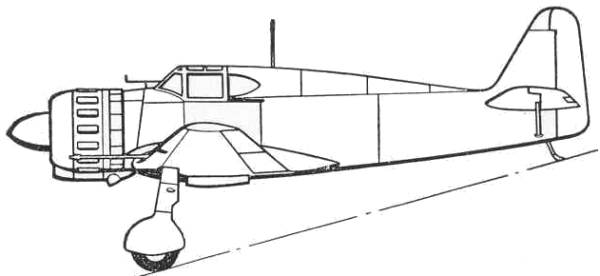
The Bloch MB 152.C1 was one of four types that made up the backbone of the Armée de l'Air during the defense of France in 1940. The development of the MB 152C.1 was somewhat complicated and long. The French Ministry of Aviation had in 1935 ordered the manufacture of the Bloch MB 150 prototype. This was ready for its first flight in July of 1936, however the aircraft was unable to take off apparently due to lack of engine power and not enough wing area. The aircraft was then redesigned with a new engine, wing and undercarriage and on 29 August 1937 it was successfully flown. Its overall performance was still not totally satisfactory and the aircraft went through another round of modifications. Never the less the aircraft was ordered into production as France was in disparate need of fighter aircraft. For series production it was found the aircraft was not well suited for mass production and therefore under went yet another round of modifications. The modified aircraft was designated the MB 151C.1 and was powered by a Gnome-Rhone 14N-29. Output suffered due to lack of propellers and weapons and they were only produced with machine gun armament. The engine tended to overheat and actual performance fell below calculated values. The MB 151C.1s were never considered to be combat ready and were used for training purposes. They were however exported with 9 out of 25 ordered by Greece being delivered.
The engine over heating issue led to the MB 152C.1 design. This time the shape of the cowl was the subject and during production three different cowling shapes were tried before a satisfactory shape was found. Hand over to the Armée de l'Air was delayed due to faulty tail planes in the first series, the late series aircraft being powered by a Gnome-Rhone 14N-49 engine. As a result of the difficult development and slow production only one unit, GC I/I, received the new Bloch MB 152s before the outbreak of the war. During the Battle of France MB 152s were deployed to GC I/I, GC II/I, GC II/6, GC II/9, GC II/8, GC II/10, GC III/10, GC I/8 and GC III/9. Polish GC I/145 was in a training state. Bloch 152s were also assigned to many regional defense units and Navy fighter units.
While the MB 152C.1 was slower than the Bf 109Es, it featured good maneuverability, heavy armament, good dive speed and was capable of sustaining heavy damage. Unfortunately it did not perform well at high altitude. Several French pilots became aces while flying the MB 152C.1. The short range of the MB 152C.1 prevented them from being evacuated to Africa when the armistice was signed. Most Bloch units were withdrawn to non occupied territory and became part of the Vichy Air Force. These were gradually replaced by the more powerful Dewoitine D.520s. Eventually when the rest of France was occupied several of them were seized by the Luftwaffe and used for training purposes.
The Kit
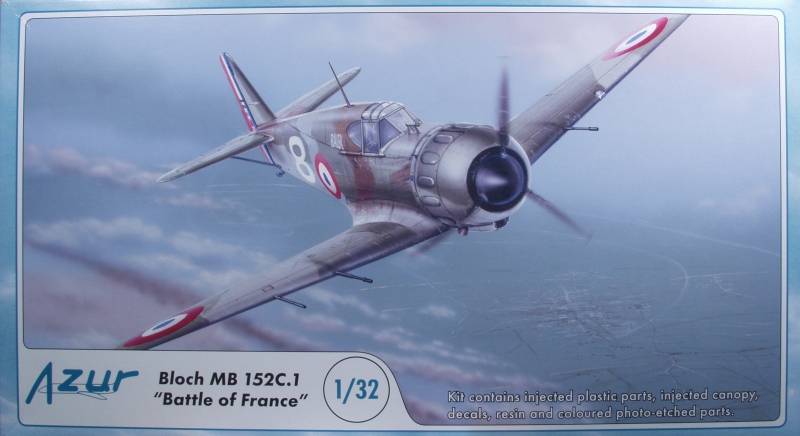
The Azur kit comes in a rather large, for the size of the aircraft, top open box with nice artwork on the top. The inside of the box is arranged more like many MPM kits than the previously released Azur kits with a cardboard insert stapled inside to which is attached the resin and clear parts which are separately bagged. The clear parts are in a resealable bag and the resin in a zip lock bag. The rest of the parts are enclosed in a resealable bag. Inside the bag are three sprues molded in a medium gray color. The surface detail consists of recessed panel lines and rivet detail with the occasional raised detail where appropriate. The surface is smooth but not quite glossy and there is some light flash on some parts as well as the usual heavy sprue attachment points typically found on limited run kits. The ailerons are molded in the neutral position but the elevators and rudder are separate. The tail surface parts have ejector pin towers that will need to be removed before assembly. I did not find any ejector pin marks that will be seen after assembly. The smaller parts also have a bit of flash and the mold seams are a bit heavier than I like to see. The cockpit is reasonably well appointed with mostly injected molded parts with some photo etch parts to dress things up. The instrument panel is nicely molded with raised dials and raised detail in side them but it will be a test for some (like me) to paint. The tires are not weighted and the propeller is supplied with separate blades but they are keyed for the proper angle. The engine and cowling are supplied as resin parts which will be discussed below. The wheel wells are boxed in but there is almost no detail in them. See photos below.
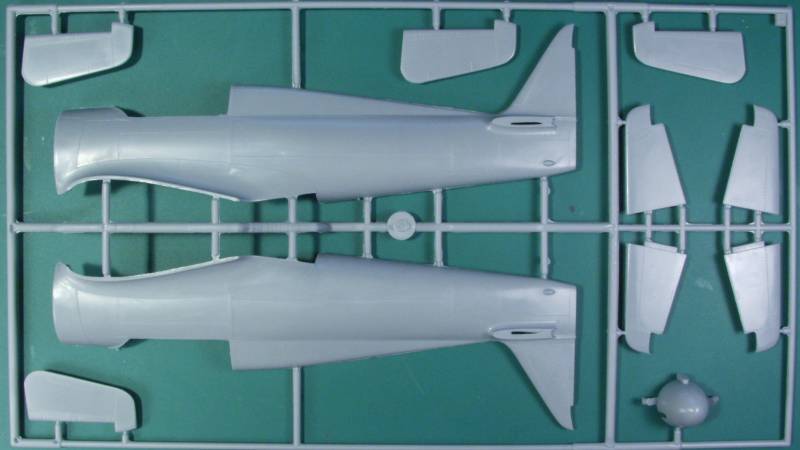
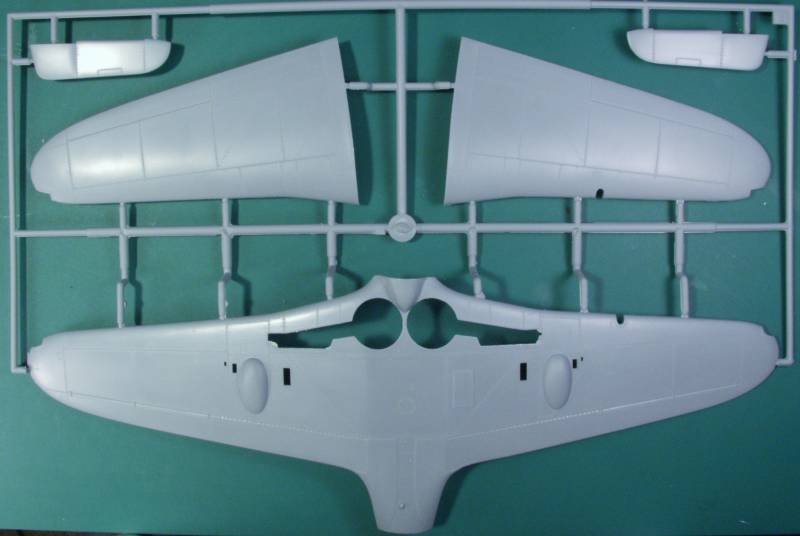
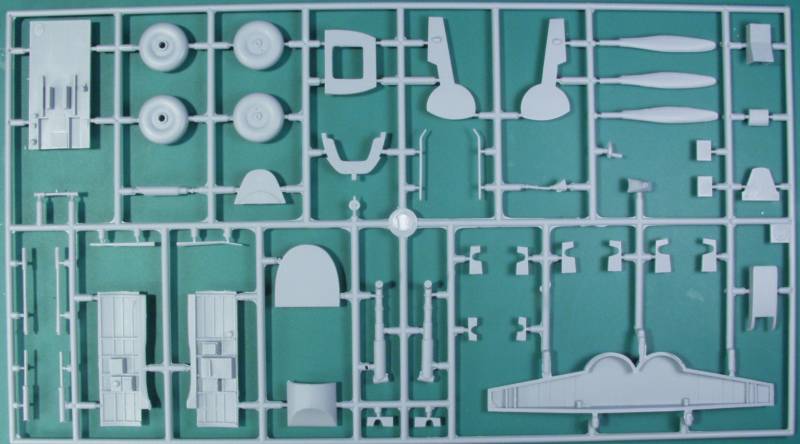
As I mentioned above the engine and cowling are resin parts. There is a crankcase to which you install separate cylinder heads. The cylinder heads are nicely molded and free of molding defects but it appear that they tried to mold in push rods but were only partially successful and generated a lot of flash. I think it would be best to remove these and install separate push rods from small diameter wire. There are 16 cylinders supplied and only 14 required so you have 2 spares just in case. The main cowling itself is a very nice molding with recessed rivets. I does, however, have a very large pour block to remove and care will need to be used when removing it. The advantage in casting it this way allows the rocker cover bulges to not have a seam across them that you so often see when this is done by injection molding. The forward cowling is an extremely thin part. It does not have a pour block, just a small tab to clean off but care should be used in handling this part. Also included in resin are two torque scissors, pilots seat, exhaust stacks, a throttle quadrant, the propeller back plate and a couple of other small detail items. See below.
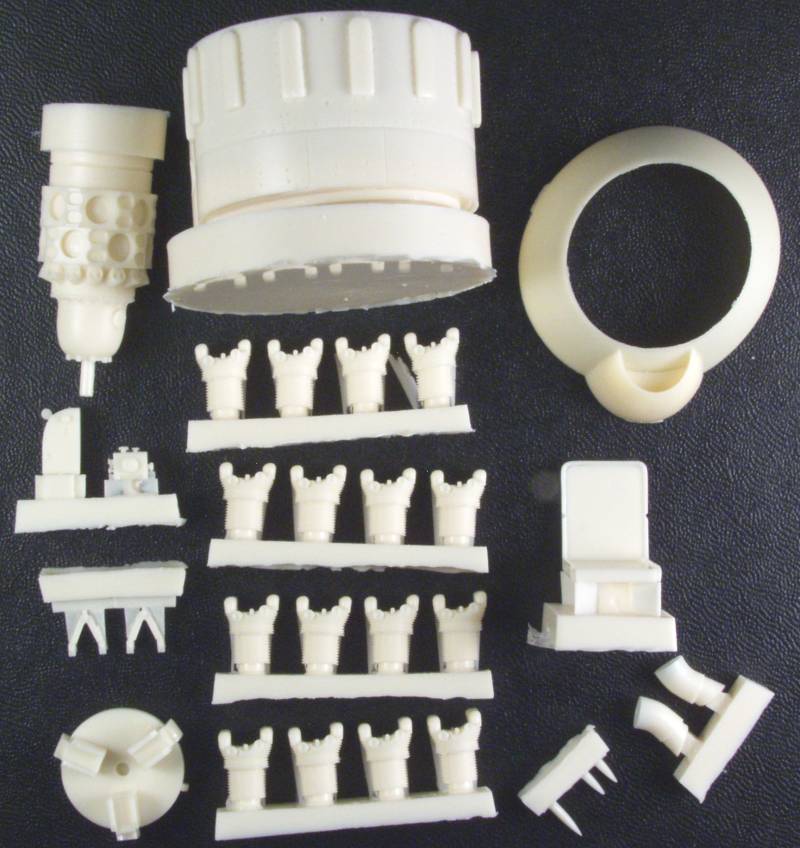
This small fret of photo etch is included and includes belts, harness and other detail parts for the cockpit. See below.
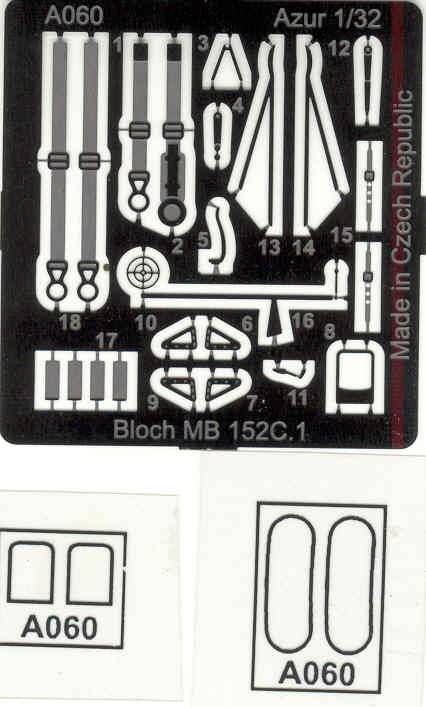
The clear parts are thin and clear and in spite of being well packed, three of the six parts had come detached from the sprue. The canopy can be displayed opened or closed. See below.
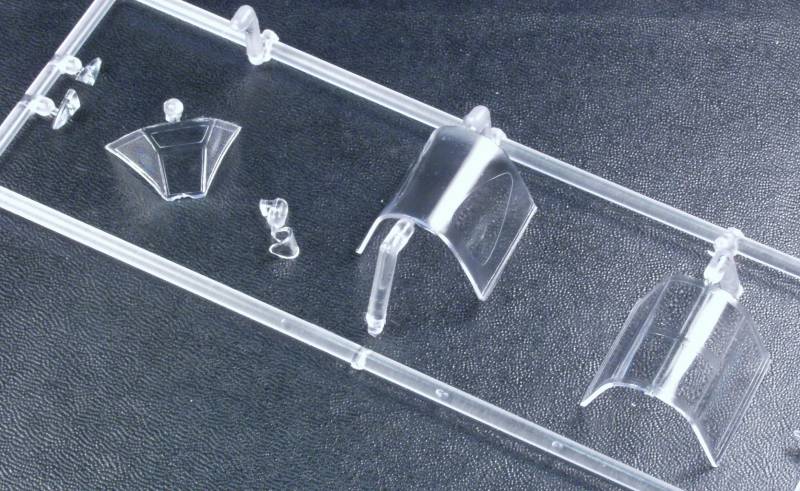
The decals are printed by Aviprint, are in register and appear nice and thin with a glossy finish. The white lettering appears that it might not be all that opaque when applied over dark colors. The data for the rudder is printed separately from the color stripes for the rudder which will allow those that may wish to paint the rudder stripes instead of using the colored decals to do so. The sheet provides markings for three aircraft. See below.
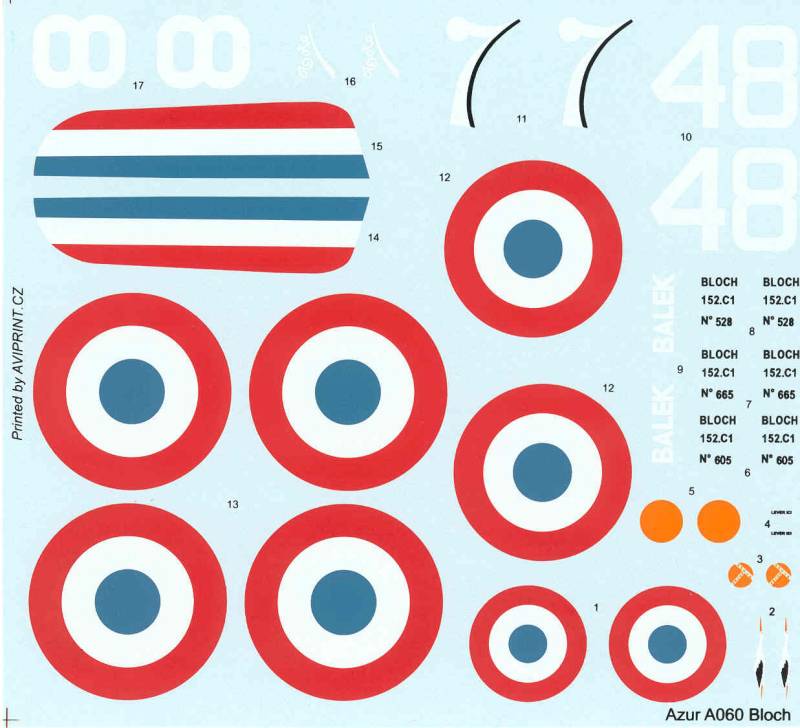
The instructions consist of an A4 sized booklet made up of two sheets printed on both sides and folded into a booklet form with eight panels. Panel one has the history and basic technical specifications in Czech and English, panel two has a parts map and icon chart, panels three through seven are assembly steps and panel eight is a listing of other 1/32 scale kits from Special Hobby and Azur. An additional sheet printed in color and folded in half to create four panels has the painting and marking instructions for the aircraft provided on the decal sheet and another advertisement for kits from Special Hobby and Azur.
After Market Goodies
None that I know.
Conclusions
This is another nice kit from Azur and should build up into a nice model. All caveats for limited run kits apply to this kit and I recommend this one to those modelers with some experience building limited run kits.
Links to kit build or reviews
A build can be found here.
References
Warplanes of the Second World War, Fighters volume one by William Green.
Back to the 1/32 Scale French Aircraft page